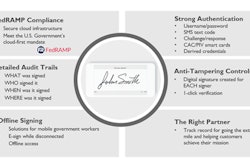
The grocery business has gone through a dramatic transformation in 2020 due to the Coronavirus disease (COVID-19) global pandemic. And, despite the challenges, including regulations designed to protect shoppers and employees, stores rose to the occasion by quickly adopting new sales and fulfillment models and adapting operations to create the safest possible shopping experience they could under very dire circumstances.
One major adjustment many grocers made was enhancing the online shopping model. This quick pivot has allowed them to meet the exploding ecommerce opportunity driven by COVID-19 and consumer demand. In fact, Bank of America analysts expect online grocery sales to reach $705 billion by 2025—triple the sales of 2019.
Even while faced with supply chain challenges and increasing hygiene and cleanliness protocols during this public health crisis, grocers still must contend with one constant that will always remain—managing product recalls and withdrawals. Beyond voluntary withdrawals, there were a total of 337 recalls in 2019, 212 issued by the FDA and 125 issued by USDA, with some fresh produce being recalled multiple times.
It’s no secret that dealing with recalls is a tremendous undertaking. Today’s global food supply chains are more complex than ever. While we all appreciate the vast number of choices found in our local stores, the low prices and the year-round availability of many food items that were once only seasonal, all of these factors add to supply chain complexity. And, when combined, they contribute to product safety failures and increased risk to customers.
Grocery stores that do not have an effective methodology to deal with food and product recalls can face significant consequences. The lack of prompt action presents the potential for significant economic fall-out, resulting in the loss of customer trust and long-term damage to the grocer’s brand reputation. Establishing a set of best practices to perform an effective food recall or product withdrawal, which combines immediate action with effective communication with stakeholders in each store is critical for every grocery business. This will limit your company’s exposure and mitigate the damage to your reputation and bottom line.
Looking ahead to 2021, it’s a good idea to review your product recall policies and procedures and make sure they’re appropriate given the changes in operations this year. Grocers should also consider whether they’re using outdated processes and technologies given the increased complexity and risk introduced with these changes.
Three important strategies that comprise a modern approach to managing food and product recalls include:
Establish a recall management team. Establishing a pre-determined team that manages the entire end-to-end recall process should be the first stage of a revamped strategy. If you already have a team in place, be sure to regularly revisit who is in it and how it’s structured. Each individual should have assigned roles and responsibilities. The group should be led by a recall coordinator who oversees the team’s efforts and effectiveness.
Communicate quickly and clearly with all stakeholders. Unlike the corner grocery stores from the past, it’s extremely unlikely that today’s grocery store chains can manage the recall process successfully using a manual approach. When a contaminated food product or dangerous baby toy has been identified, quick and accurate communication across store locations and with internal stakeholders, including legal departments, marketing and PR teams and even your distributors, is critical. Automating the communication and response management process is critical. Whether notifications are sent by text message, email or phone call, it’s imperative that the recall team provide clear instructions about how to identify the product(s) in question, what action stores should take and how to respond that action has been taken.
Managing the entire event lifecycle and comprehensive record keeping. From initial investigation to communication and recovery, it’s extremely important to monitor the process and keep complete records. Monitoring includes ensuring communications have been received, responses have been recorded for each recipient, and how much product has been recovered and removed from the shelves. Using spreadsheets to manually record the results is not only counter-productive but it’s prone to human error. Software designed to notify and track responses can provide reporting details in real-time to gauge the effectiveness of the recall effort. Technology platforms offer transparency, giving the recall team access to the data along with actionable information to manage the recall process from start to finish.
Ensuring the quality, consistency and safety of food and consumer products has grown ever more challenging given today’s global supply chains, evolving consumer preferences and ever-increasing sales and fulfillment models. Grocery brands should consider investing in technology to automate the recall management process as part of their overall commitment to providing an exceptional shopping experience. It’s an important and strategic investment in protecting the health and safety of your customers and protecting your brand’s reputation.




















